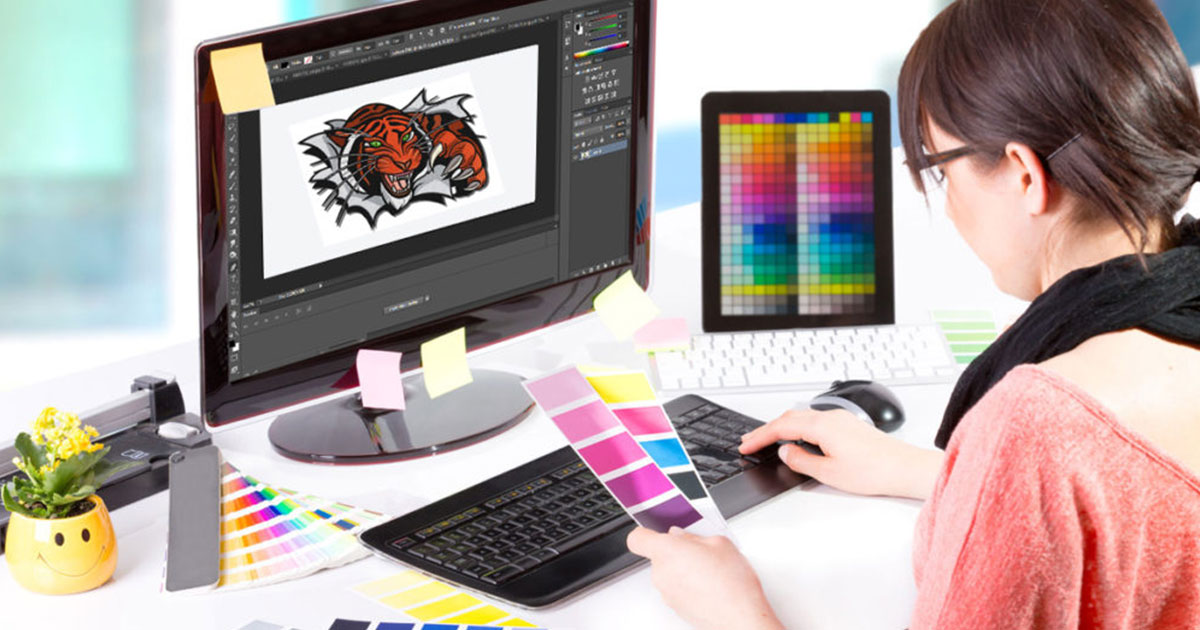Discover Different Types of Needlework Digitizing Techniques
Embroidery digitizing has progressed considerably for many years, supplying a myriad of techniques to bring designs to life in the digital world. From the intricate creativity of standard hand embroidery digitizing to the accuracy of the boxing strategy, and the ease of auto-digitizing software programs, the options are huge. In addition, the realm includes much more sophisticated strategies like photorealistic needlework digitizing and the remarkable world of 3D needlework digitizing. Each method brings an one-of-a-kind set of possibilities and challenges to the table, making the expedition of these techniques an engaging journey for those in the embroidery world.
Standard Hand Needlework Digitizing
Traditional hand embroidery digitizing entails the process of transforming intricate hand-stitched styles right into electronic formats for maker needlework. This method calls for competent craftsmens to carefully assess the handcrafted design and afterwards utilize specialized software to recreate it in a digital style. Each stitch, color, and information should be thoroughly converted to make certain that the essence of the original hand embroidery is protected in the electronic variation.
One of the key challenges of conventional hand needlework digitizing is catching the ins and outs and subtleties of the handmade layout. Digitizing for Embroidery. Artisans should possess a deep understanding of different embroidery methods, such as satin stitch, chain stitch, and French knots, to accurately duplicate these techniques in the digital world. In addition, they need to have an eager eye for detail to guarantee that the electronic layout maintains the same level of creativity and craftsmanship as the initial hand-stitched piece
Punching Method
To flawlessly transition from traditional hand needlework digitizing to the punching technique, craftsmens must currently focus on converting the intricate digital designs into guidelines that embroidery equipments can translate. The punching method includes using specialized software to produce digital data that include commands for the needlework machine to comply with. This process needs a deep understanding of not simply the style itself yet also the abilities and constraints of the needlework maker.

Auto-Digitizing Software Program Programs
Embroidery digitizing has been changed by the introduction of auto-digitizing software application, offering craftsmens with innovative devices to transform electronic styles right into needlework device guidelines my latest blog post successfully. Auto-digitizing software application use formulas to evaluate electronic pictures or vector files and generate embroidery styles automatically. These programs permit fast and precise conversion of complex styles into stitch patterns, conserving time and initiative for embroiderers.
One of the key advantages of auto-digitizing software is its easy to use interface, making it easily accessible to both novices and experienced digitizers. These programs usually consist of attributes such as stitch editing tools, thread color matching, and the ability to preview the last embroidered design. Additionally, auto-digitizing software application can manage complicated layouts with numerous colors and complex details, creating top notch needlework data appropriate for various apparel and fabric projects.
While auto-digitizing software view it now program provides ease and effectiveness, it is vital for customers to understand the constraints of automated digitizing. Fine-tuning and hands-on modifications might still be required to achieve the preferred needlework quality, especially when dealing with complex or unique layouts. By leveraging the abilities of auto-digitizing software application together with manual digitizing techniques, craftsmens can boost their needlework digitizing process and create magnificent stitched items.
Photorealistic Needlework Digitizing
Using advanced digital imaging methods, attaining photorealistic lead to needlework digitizing has actually come to be a sought-after skill among contemporary craftsmens. This strategy involves converting high-resolution images right into intricate stitch patterns that closely mimic the original style, causing needlework items that show realistic detail and deepness.
To achieve photorealistic embroidery digitizing, craftsmens must possess a keen eye for detail and a comprehensive understanding of just how various stitch types and densities can influence the last end result. By very carefully drawing up each shade and color in the photo, embroiderers can produce an electronic data that guides the embroidery equipment to reproduce the nuances of the initial photo properly.
Photorealistic embroidery digitizing is especially popular in producing customized styles for clothing, home style, and art pieces where recording the essence of a picture or art work is important. This technique enables craftsmens to transform memories, landscapes, pictures, and complex artwork right into sensational embroidered work of arts that display a mix of traditional craftsmanship and advanced technology.
3D Embroidery Digitizing
With the innovation of digital imaging strategies in achieving photorealistic lead to needlework digitizing, the exploration of 'D Needlework Digitizing' uses a new dimension to the intricacies of layout duplication. 'D Embroidery Digitizing' refers to the three-dimensional digitizing technique that adds depth and structure to embroidery styles, creating a more reasonable and aesthetically appealing end product. This technique uses software that replicates the result of light and shadow on the needlework design, improving its total visual influence.
Among the essential Digitizing for Embroidery advantages of 'D Embroidery Digitizing' is its capability to make designs look even more realistic and vibrant. By including depth to the needlework style, the end product shows up more sensible and fascinating (Digitizing for Embroidery). Furthermore, this technique permits even more innovative flexibility in design implementation, making it possible for embroiderers to explore different structures and effects that were previously testing to attain
Conclusion

Comments on “Top Quality Digitizing for Embroidery: Expert Craftsmanship”